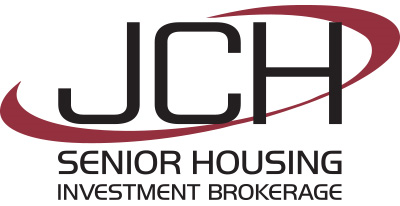Many years ago, when I was in operations and our Skilled Nursing Facility (SNF) was preparing for our annual survey, I heard that NOC shift employees were sleeping during their shift. I set my alarm for the middle of the night, snuck into the back door of the facility and as word spread that I was on site, staff began appearing at nurses’ stations. However, one particular employee had not heard his peers texting him and I found him fast asleep on the lobby floor. To his surprise he was awoken from his nap, and to my surprise he didn’t understand why this strange lady was so irritated. You see, while I was disappointed that our NOC shift was stealing company time, not answering call lights, or doing what we paid them to do, the ultimate failure was mine. How did the NOC shift feel so removed from our company culture that this behavior ran rampant? Moreover, why did this young Certified Nursing Assistant (CNA) not know who the corporate leadership was, but most importantly why did I not know his name, or really anyone’s on NOC shift? This was an abject failure of leadership, my leadership.
Flash forward to today’s post-COVID environment and “The Great Resignation” that swept through the Senior Housing industry. What if instead of viewing this as employees walking away from Senior Housing, we reframe this moment as “The Great Awakening” when Skilled Nursing, Assisted Living, and Memory Care owners must finally align their goals with that of their staff to attract, retain and grow tomorrow’s leaders? The National Investment Center for Seniors Housing & Care (NIC) Q4 2021 data indicates that between May 2020 to December 2021, in over 14,800 properties, more than 22.2% were missing staff. I imagine by now everyone has researched your starting wages against those of fast-food employers in your area. In Los Angeles County, a CNA average starting wage is $16.83/hour. Whereas the average In-N-Out (regional fast-food chain) associate starts off at $17.15/hour. The great news is that salary is simply one component of the staffing equation. By being creative, Senior Housing leaders can introduce other operational changes, and benefits, that create ideal working conditions to attract/retain star players.
Most companies offer exit interviews, but did you know that many innovative organizations are now treating the employment lifecycle more akin to a sales cycle? By applying marketing/sales strategies to recruitment they create touch points for potential staff by opening their doors each week for Talent Thursdays, and between set hours any one can come in and interview on the spot. They also implement an applicant tracking system, just as your marketing team would for prospective residents. The hiring process should be brief to maintain the excitement of joining your team. Once a team member is hired, do you know your turnover ratio? Does it differ at 30 days post hire and 60 days? In management there is one concept that rings true across all industries, if you’re not monitoring it, you’re not managing it. Employers are now implementing “stay” interviews at 30-, 60- and 90-day intervals to identify challenges new employees may be facing and provide resources to increase their success.
You can also focus on retention by promoting friendships at work. People like to work where their friends work. Incentivize employee referrals for new hires, and pair new employees with a mentor, who should be given a slight pay increase as acknowledgement of their special role in the retention process. Make a point to occasionally schedule stand-up, or stand-down, meetings in the Memory Care section of your facility, or at 2am with your NOC shift. All shifts and departments should feel seen, included and a part of the success of the team. It’s important to see every team member as a vital part of the facility’s feedback loop. Many operators are also now including one meal per shift. Your staff typically have 30 minutes for lunch and depending on where you’re located that may not be enough for them to leave to buy food and have a moment to sit, eat and prepare for the rest of their shift. A few final trends that we see include leveraging technology to post available shifts, partial shifts, and flexible schedules on a shared technology platform. Employees are now splitting shifts so that they can attend school or provide care for school aged children or aging parents at home.
At the recent American Senior Housing Association (ASHA) 2022 mid-year conference, Retirement Unlimited shared on the staffing panel that there are two value indicators that positively impact employee turnover: respect and compassion. Respect simply means know my name as a part of your team, and ask me how I am. As employers in this evolving space, we have a unique opportunity to meet the moment with compassion. We have moved towards patient centered care, is it not also time that we identify and support the whole-person needs of our incredible staff? We can no longer take for granted that our staff show up each day simply because they have a heart of service. However, we can pivot to evolve our corporate cultures so that we celebrate longevity, promote a work/life balance, lead with gratitude, and never forget our staff have other options of where to work.
